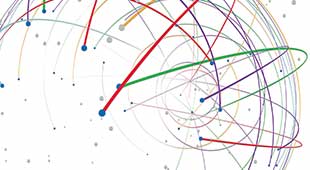LTE-M (also known as LTE-CAT-M) is a bi-directional, standards-based low power wide area technology that supports IoT through lower device complexity while providing extended coverage with prolonged battery life. One of the major reasons that LTE-M is advantageous over other new protocols available is that it does not need a new infrastructure as it can piggyback on existing LTE networks. That means a carrier can update software on its network, get LTE-M functional, and not spend any additional funds on infrastructure or support services.
Additionally, using an extended discontinuous repletion cycle (eDRX), the data collection devices can transmit data on a non-continuous schedule, as set by the end user. The device, when not sending data is not off, just asleep. When data is scheduled to be sent, the device does not need to be re-activated to join the network, it just wakes up. Having intermittent data send-schedules, which are not active 24x7, can save battery life, leading to significant cost savings.
As with any technology entering the marketplace, LTE-M is not without issues. For instance, LTE-M still is in the process of being deployed globally, therefore coverage holes exist. But as this protocol continues to grow in acceptance, those holes will go away altogether. And because of those holes, roaming is not as seamless as it should be (that’s why you need a technology-agnostic carrier). As this protocol expands, and more end-users see its value, network congestion could be an issue.
But all these are growing pains, not insurmountable problems. The many advantages of LTE-M far outweigh any temporary drawbacks.
Supported by all major mobile equipment, chipset, and module manufacturers, LTE-M can co-exist with standard consumer LTE mobile networks and benefit from all the security and privacy features of these networks, such as support for user identity confidentiality, entity authentication, data integrity, and mobile equipment identification.
In addition, Aeris Fusion IoT Network has incorporated advanced functionality to provide the highest value for data access and security in the industry:
 |
ConnectionLock |
|
|
SIM as Security Element |
|
|
Location APIs
Leveraging Aeris location APIs for coarse location enables customers to not rely on continuously running GPS, thereby minimizing battery drain and extending battery life. Additionally, obtaining coarse location from the Aeris network enables organizations to meet their service level agreement commitments for asset tracking. |
|
|
Roaming Control |
|
|
Best Practices Resources |

LTE-M is poised to dominate the IoT world for years to come, replacing GSM and CDMA protocols. One reason is the cost of cellular deployment, initially developed for high speed, high data volumes, is considered too expensive for widespread IoT use due to excessive power consumption and complex protocols that shorten battery life.
LTE-M is today’s standard, meeting security and power conservation levels suited for global deployments in multiple business sectors. With low-cost modules, extended battery life, better signal penetration, and the ability to use existing infrastructure, LTE-M has the potential to improve all IoT business models.



